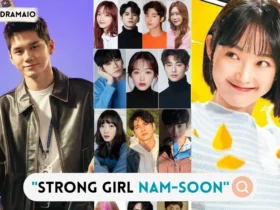K-pop is a wonderful genre of music with catchy beats, great dancing, and voice-overs that make you feel like you’re really there. The “Soloiste” is an intriguing notion in Korean K-pop, so let’s explore it now.
Imagine a solo singer standing in the middle of the stage and putting their whole heart and soul into the song. They would draw the audience in with their honest, unfiltered emotion. That, my friend, is what a soloiste is all about. This word is used in K-pop to describe a singer who moves away from the group for a short time to act alone.
Now, why are Korean K-pop stars so excited about the soloiste trend? Well, it’s all about showing off your own skills and making the song story more personal. A soloiste in the music of K-pop is like a painter who is making a masterpiece with a single brushstroke.
Hitting the high notes or showing off your vocal gymnastics isn’t enough. The soloiste adds a unique sound to the mix and tells a musical story that is all their own. It gives you a chance to shine, enjoy the attention, and get to know the crowd better.
Imagine a beautiful tapestry, with each individual member representing a thread that adds to the tapestry’s overall design. But every once in a while, a soloiste steps forward and adds a splash of bright color that makes the whole piece of art better.
Finally, let us talk about why K-pop artists include solo acts in their sets. It’s not just a way to show off individual ability; it’s a move meant to keep things interesting and new. An extra musician called a soloiste makes the group’s music more flexible, so fans can hear a wider range of sounds and styles.
It’s kind of like a chef trying out different items to make a masterpiece dish. Different kinds of music are what make K-pop interesting, and the soloiste is what gives it that extra kick.
A solo show also gives the artist a chance to explore ideas and feelings that might not fit well with the group’s overall style. They can share personal stories, goals, and experiences, which helps them connect with the audience more deeply.
In the constantly changing world of K-pop, the soloiste is a symbol of the individual’s artistic journey within the unity of the group. And it’s not just singing; it’s also sharing stories, showing feelings, and leaving a mark on fans’ hearts that will never go away.
When you listen to a solo K-pop artist’s soul-stirring vocals, know that it’s not just a performance; it’s a musical journey into the depths of emotion led by the magic of the soloiste.
































Leave a Review